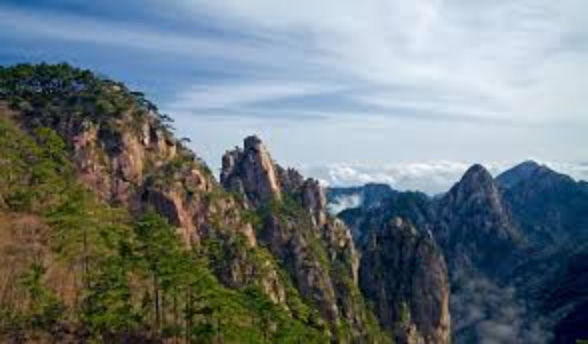
How Old is Mount Huangshan?
Mount Huangshan, often described as the “loveliest mountain of China”, has played an important role in the history of art and literature in China since the Tang Dynasty around the 8th century, when a legend dated from the year 747 described the mountain as the place of discovery of the long-sought elixir of immortality. But how old is Mount Huangshan, geologically speaking?
Formation of Mount Huangshan
The geological history of Mount Huangshan can be traced back millions of years.
- Precambrian Era (4.6 billion to 541 million years ago): The very bedrock that forms the foundation of Mount Huangshan began forming during this time. Intense heat and pressure transformed sediments into metamorphic rocks like gneiss and schist.
- Mesozoic Era (252 to 66 million years ago): This era witnessed the rise of the ancient Huangshan mountains due to tectonic plate movements. These mountains were much higher than today's peaks but were gradually eroded over time.
- Cretaceous Period (145 to 66 million years ago): Intense volcanic activity in the region led to the formation of granite intrusions into the existing rock. This granite is what makes up the distinctive peaks of Huangshan we see today.
- Cenozoic Era (66 million years ago to present): The final shaping of Mount Huangshan occurred during this era. Uplift and erosion sculpted the granite into the dramatic peaks, valleys, and rock formations that the mountain is famous for. Glaciers during the Quaternary ice ages also played a role in carving out valleys and lakes.
Estimating the Age
Determining the precise age of a mountain is complex. Geologists use various methods like radiometric dating to analyze the age of rocks. Based on these studies:
- The granite that makes up the iconic peaks of Huangshan is estimated to be around 100 million years old, dating back to the Cretaceous period.
- However, the mountain's formation began much earlier, with the bedrock being potentially billions of years old, formed during the Precambrian era.
Geological Significance
Mount Huangshan is a remarkable example of how geological processes over millions of years can shape landscapes.
| Geological Feature | Formation Process |
|---|---|
| Granite Peaks | Intrusion and cooling of magma, followed by uplift and erosion |
| Steep Valleys and Gorges | Erosion by glaciers and rivers |
| Peculiarly Shaped Rocks | Weathering and erosion, influenced by the granite's composition |
Today, Mount Huangshan stands as a testament to the power of geological time, showcasing a landscape sculpted over millions of years. While the iconic peaks may be relatively young in geological terms, the mountain's deep history dates back to the early formation of our planet.
FAQs
Q1: What type of rock is Mount Huangshan primarily made of?
A1: Mount Huangshan's iconic peaks are primarily composed of granite, a type of igneous rock formed from cooled magma.
Q2: How did the unique rock formations on Mount Huangshan come to be?
A2: Millions of years of weathering and erosion, influenced by factors like wind, rain, and temperature changes, sculpted the granite into the unusual shapes seen today.
Q3: Is Mount Huangshan still geologically active?
A3: While the region is not as tectonically active as it once was, Mount Huangshan continues to undergo slow geological changes due to weathering and erosion.